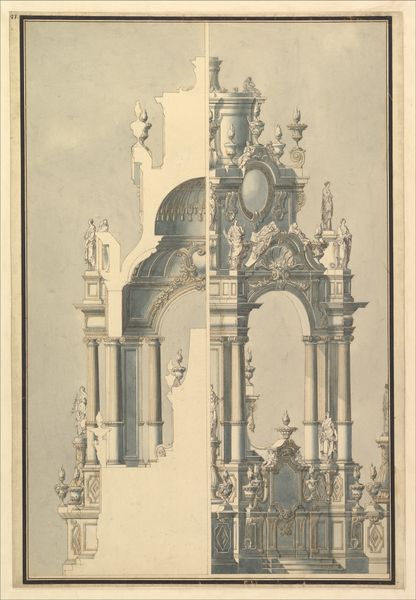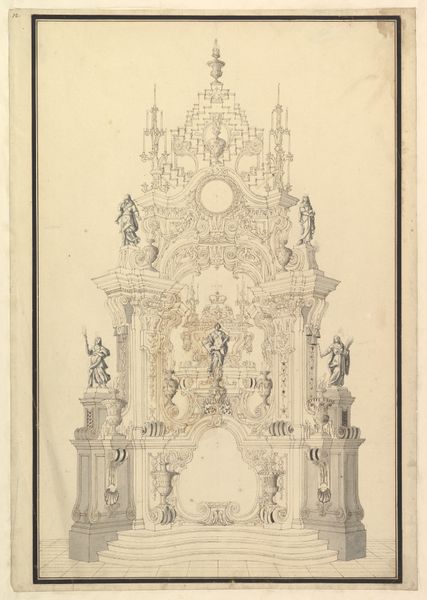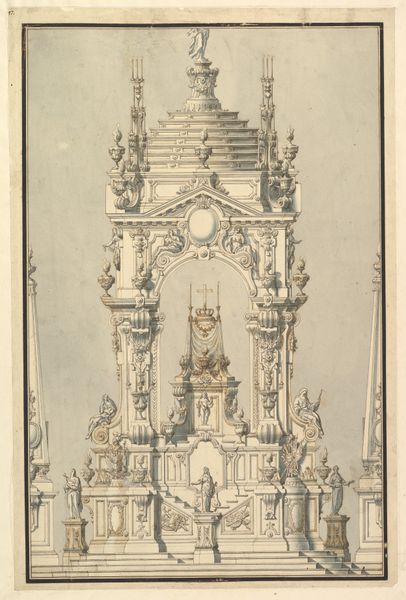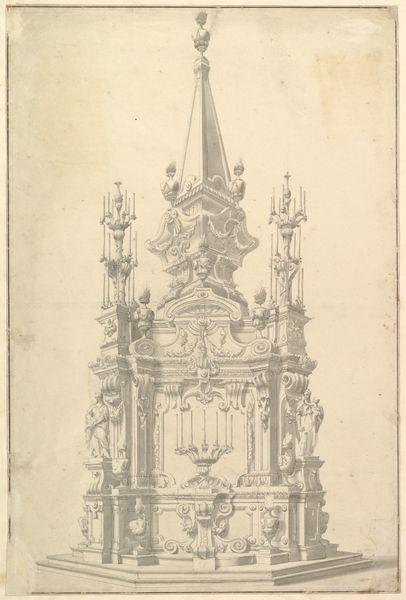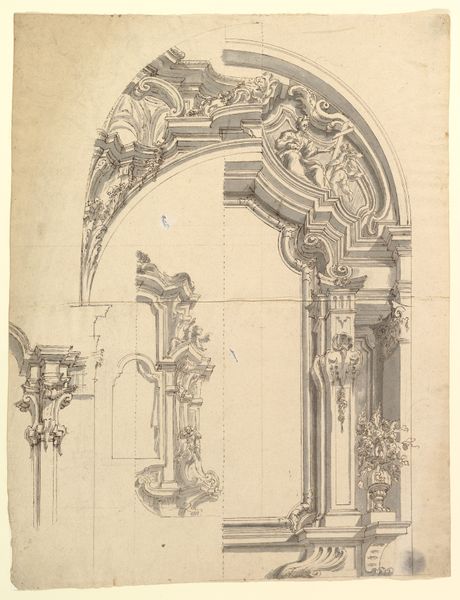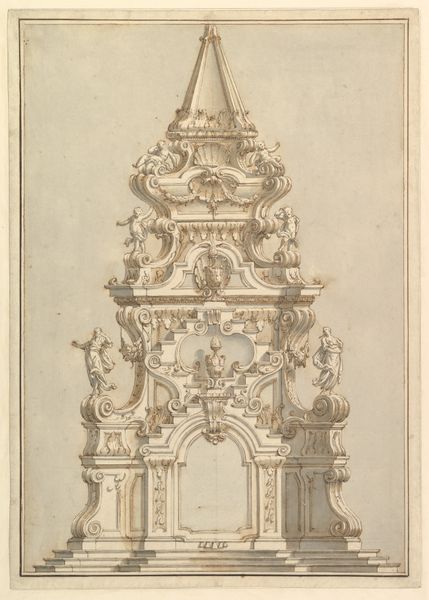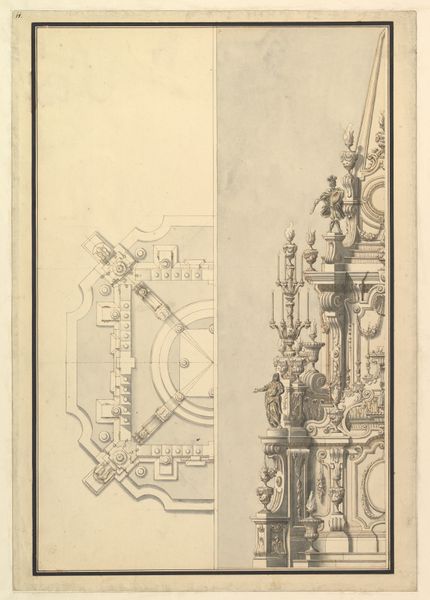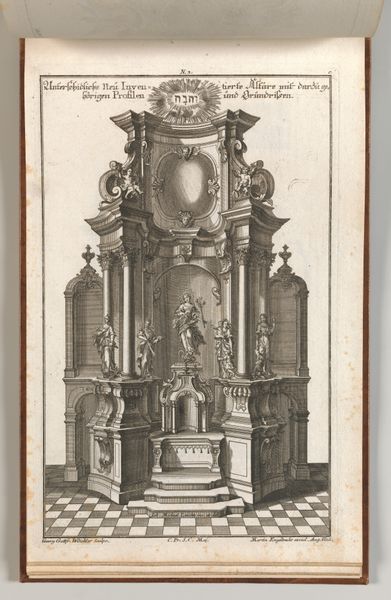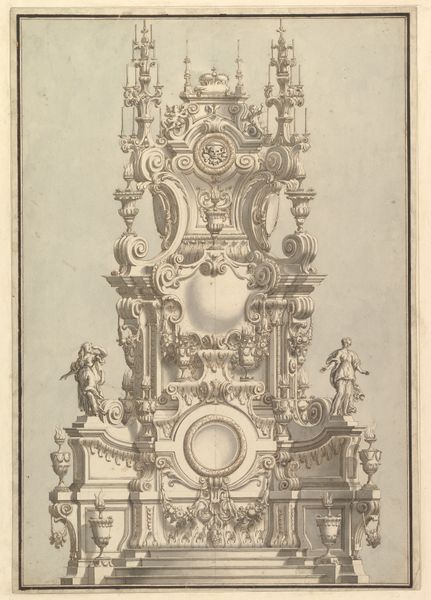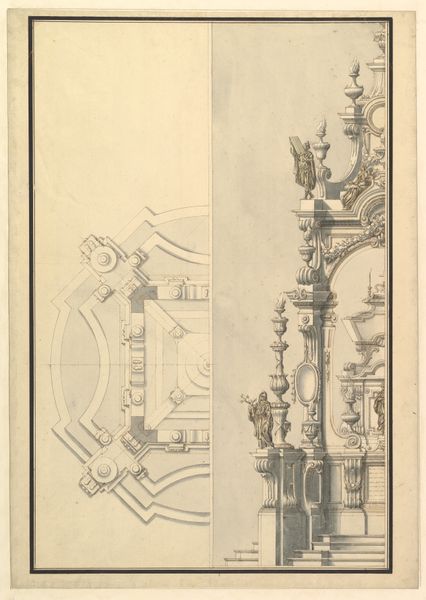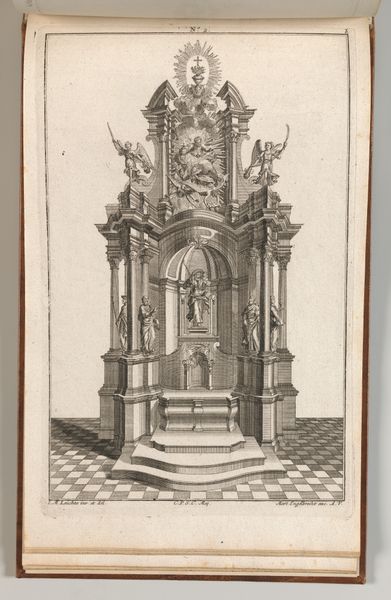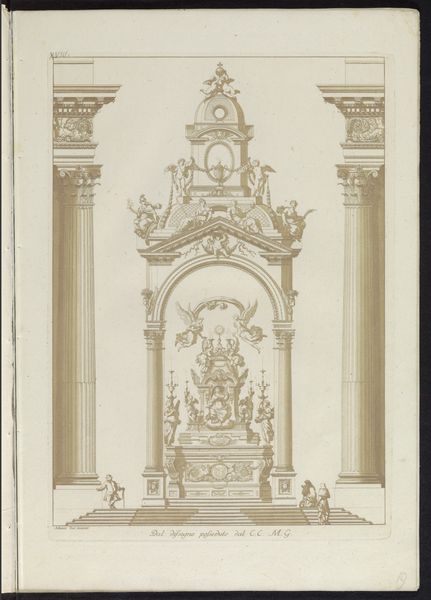
Half Elevation and Half Section of Catafalque for a Duchess of Hanover, probably Sophia (1630-1714) 1696 - 1756
0:00
0:00
drawing, print, ink, architecture
#
drawing
#
baroque
# print
#
ink
#
architecture
Dimensions: 20-3/4 x 14-1/4 in. (52.7 x 36.2 cm)
Copyright: Public Domain
Curator: My initial reaction is one of austere grandeur. There's a deliberate emptiness, a designed hollowness that speaks to absence and memory. Editor: It's certainly monumental. What we’re looking at here is Giuseppe Galli Bibiena's "Half Elevation and Half Section of Catafalque for a Duchess of Hanover, probably Sophia (1630-1714)." The piece, a drawing rendered in ink, now resides at the Metropolitan Museum of Art. I understand it was created sometime between 1696 and 1756. Curator: "Monumental" is the word. But what does this constructed memory tell us? Catafalques are fascinating—these temporary structures for elaborate funerals were theatrical affirmations of power, right? Each element becomes a loaded signifier, a coded message to the living about the deceased’s legacy. Editor: Absolutely. Bibiena, coming from a family of theatrical designers, surely understood spectacle. It was their business to project authority. The Baroque style itself amplifies this, right? All the ornamentation, the swirling lines...It's less about grieving and more about crafting a political image for the Hanover dynasty. We need to see how funeral rites and architecture serve state power. Curator: Observe, for instance, how he mirrors and bifurcates the architecture. One side is complete, meticulously detailed with allegorical figures holding emblems, while the other is just a skeletal outline. Is this a visual device signaling mortality—a suggestion that worldly power fades and crumbles? Perhaps Sophia, though elevated, still exists only as half her former self. The complete vision is gone, leaving only a blueprint behind. Editor: And note how even in blueprint, the symbols maintain power. The family's message carries. It raises the interesting issue: What power dynamics are enacted even through staged grief? Curator: Grief performed becomes heritage created. Bibiena has not only provided a visual memory of the departed Duchess, but a tangible emblem that reverberates even today. It tells a continuing story of power— and its inevitable passing. Editor: That duality you highlighted— between monument and reminder of mortality. It truly allows us to ponder not just the life of one noblewoman, but the very mechanics through which states perpetuate influence and articulate meaning across generations.
Comments
No comments
Be the first to comment and join the conversation on the ultimate creative platform.
